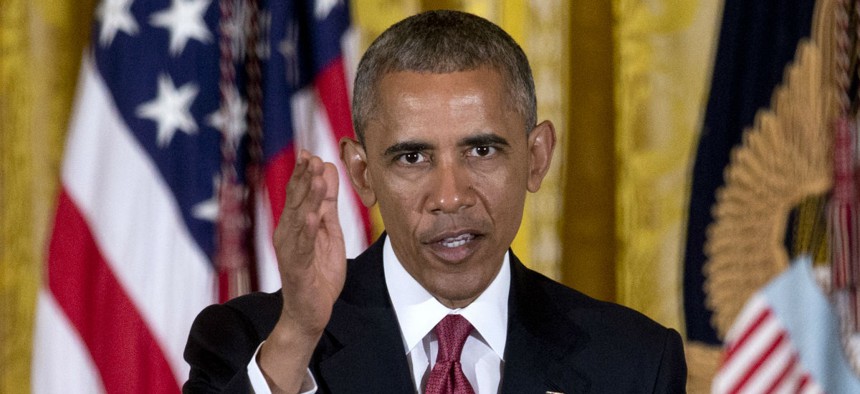Obama Demands Agencies Cut Spending by 5 Percent in 2017
Certain priorities must be protected from cuts, OMB says.
This story has been updated.
Federal agencies will seek 5 percent in discretionary spending cuts in their fiscal 2017 budget proposals compared to the planned funding levels spelled out in their fiscal 2016 requests, under an order from the Obama administration.
The cuts should be aimed at ongoing efforts to reduce “fragmentation, overlap and duplication,” Office of Management and Budget Director Shaun Donovan wrote in a memorandum to agency heads May 1. The call for the 5 percent governmentwide cut comes after Obama proposed spending levels 7 percent above sequestration in his fiscal 2016 blueprint. The cuts should focus on areas recommended by the Government Accountability Office, Donovan said.
They should not, however, come at the expense of Obama’s priorities, including cross-agency goals, agency digital service teams and improving shared services. Donovan emphasized the “four key pillars” of the president’s management agenda as areas in which agencies should invest: effectiveness, efficiency, economic growth, and people and culture of the federal workforce.
“The president is committed to creating a government that will make a significant, tangible, and positive difference in the lives of the American people and the economy,” Donovan wrote, “and to driving lasting change in how government works.”
The memo instructed agencies to separately identify investments in “programs that support their missions,” but noted the spending could not exceed the funding level set for fiscal 2017 in the fiscal 2016 budget. Donovan told the agency heads to list those investments in order of priority.
Agencies must also undertake a “rigorous review” of their mandatory budgets, and offset any mandatory spending increases with corresponding cuts. OMB encouraged chief financial officers to submit up to five projects to consolidate disparate operations into a single location.
On Tuesday, the Senate followed the House in passing its fiscal 2016 budget blueprint. The bicameral compromise legislation -- which did not receive any Democratic support -- would slash nearly $500 billion in non-Defense discretionary funding over 10 years. The document, which does not require Obama’s signature, lays out a funding plan far more drastic than the cuts being suggested by the White House.
In the OMB memo, Donovan reiterated Obama’s threat to veto any measure that funded agencies at or below the levels required by the 2011 Budget Control Act.
“In the absence of congressional action, both Defense and non-Defense discretionary funding in FY 2016 will be at the lowest levels in a decade, adjusted for inflation, even though the need for pro-growth investments in infrastructure, education, and innovation has only increased,” Donovan wrote. “That is why the president has made clear that he will not accept a budget that locks in sequestration going forward, nor one that reverses sequestration for Defense -- including through backdoor gimmicks -- without also reversing sequestration for non-Defense.”
The House has to date has passed two of 12 fiscal 2016 appropriations bills, both of which the White House has threatened to veto.
Correction/update: This story was updated to accurately reflect the basis for the 5 percent cut target, and with comment from OMB.
NEXT STORY: CNN and FAA Team Up to Test Drones




